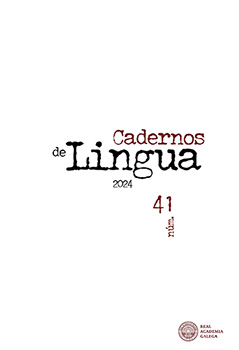Classification proposal for linguistic motivation
DOI:
https://doi.org/10.32766/cdl.41.864Keywords:
motivation, arbitrariness, extralinguistic, intralinguistic, classificationAbstract
This article explores the concept of linguistic motivation, proposing a classification system based on the relationships between the components of the linguistic sign. By examining the concept’s historical evolution through key authors, we establish a foundation for understanding how linguistic signs relate to their meanings, signifiers and the external reality they represent. This analysis leads to a proposed classification system distinguishing between intralinguistic motivations (originating within the language system) and extralinguistic motivations (arising during sign creation and modification). We illustrate this classification through examples such as polysemy and onomatopoeia, revealing the complexity of semiotic relationships. The aim of this proposal is to establish a robust theoretical framework for future research on linguistic motivation and to pave the way for its application in motivational mapping.
Downloads
References
Alinei, Mario (1997). Principi di teoria motivazionale (iconimia) e di lessicologia motivazionale (iconomastica). En: Luisa Mucciante e Tullio Telmon, eds. Lessicologia e lessicografia: Atti del XX Convegno della SIG (Chieti-Pescara, 12-14 ottobre 1995). Roma: Il Calamo, 9-36.
Anders, Valentín (2024). Sapo. Etimologías de Chile - Diccionario Que Explica el Origen de las Palabras.
Furdík, Juraj (2008). Teória motivácie v lexikálnej zásobe. Košice: Vydavatel’stvo LG.
García Manga, M.ª del Carmen (2002). La motivación lingüística: propuesta de clasificación. Res Diachronicae. 1, 159-168.
García Manga, M.ª del Carmen (2012). Aproximación discursiva y cognitiva a la motivación por etimologización. Pragmalingüística. 20, 120-148.
Goddard, Cliff (2012). Semantic primes, semantic molecules, semantic templates: Key concepts in the NSM approach to lexical typology. Linguistics. 50 (3), 711-743.
Kostina, Irina (2010). La variación conceptual de los términos en el discurso especializado. Tese de doutoramento. Universitat Pompeu Fabra.
Lakoff, George (1987). Women, fire, and dangerous things. What Categories Reveal about the Mind. Chicago: University of Chicago Press
Lyons, John (1977). Semantics. Cambridge: Cambridge University Press.
Ogden, Charles K., e Richards, Ivor A. (1923). The Meaning of Meaning. A Study of the Influence of Language upon Thought and of the Science of Symbolism. London: Routledge & Kegan Paul.
Olostiak, Martin (2019). Theory of lexical motivation in Slovak lexicology. SKASE Journal of Theoretical Linguistics. 16 (3).
Radden, Günter e Panther, Klaus-Uwe (2004). Introduction: Reflections on motivation. En: Studies in linguistic motivation. Berlin/New York: Mouton de Gruyter, 1-46.
Real Academia Española (2014). Diccionario de la lengua española. 23ª ed. [v. 27.7 on line].
Saussure, Ferdinand (1945). Curso de lingüística general. Buenos Aires: Editorial Losada.
Veny, Joan (1991). Cap a una tipologia de l’etimologia popular. En: Mots d’ahir i mots d’avui. Barcelona: Empúries, 71-95.


